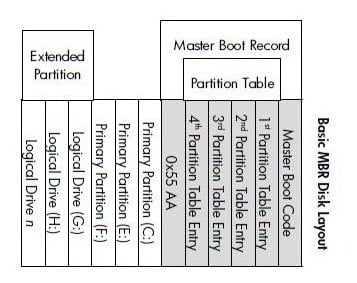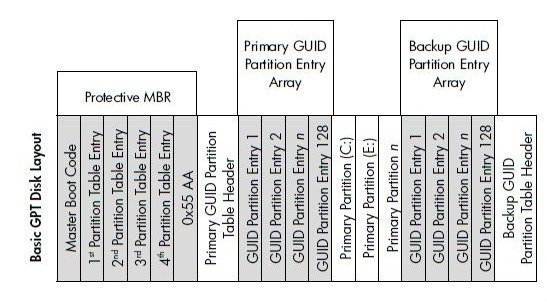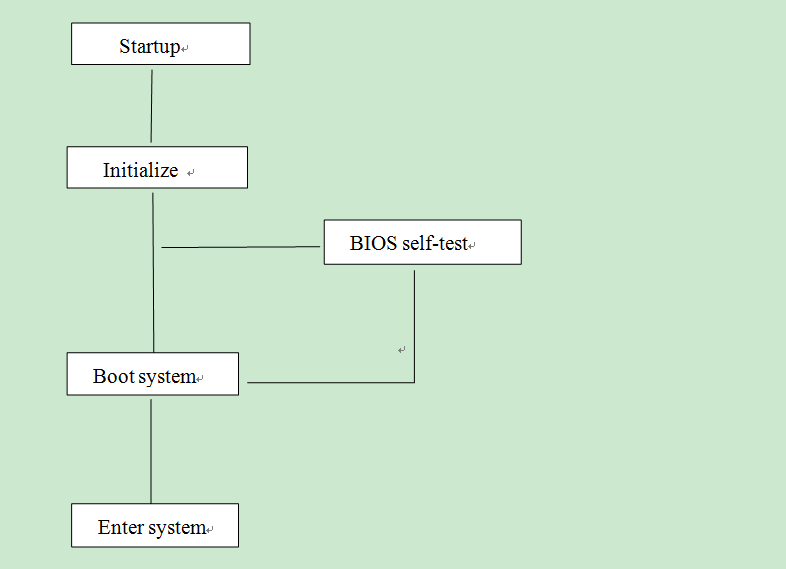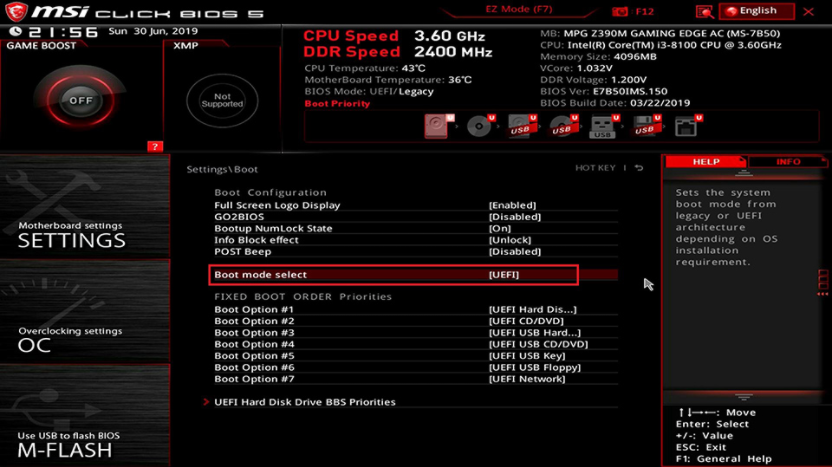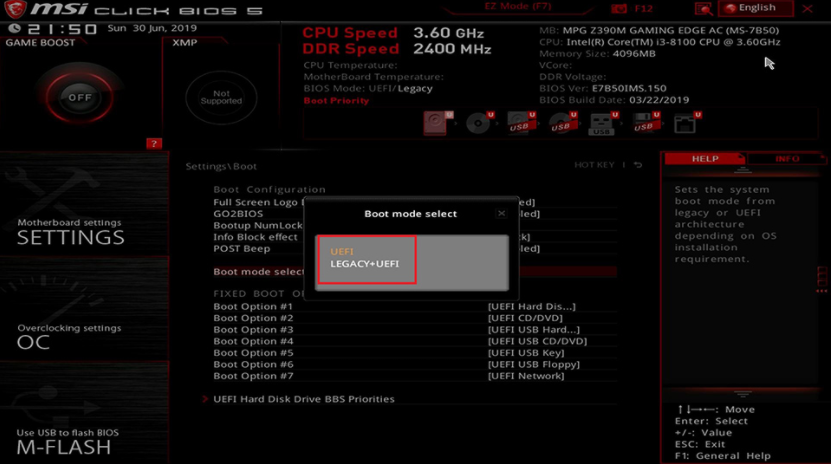Is UEFI with GPT or MBR?
GPT and MBR are always the hot topics of computer components in many PC tech forums, and after the release of Windows 11, MBR/GPT has become one of the focuses of all Windows users. In recent years, many people say that GPT disk will replace MBR disk one day in the future, some don't fully agree with this view.
However, this view is almost a foregone conclusion because Microsoft announced that UEFI is a required part of Windows 11. This means that users might have to choose a GPT disk for Windows 11. Why MBR disk cannot be in? What are the relations among UEFI, GPT, and MBR? Do you know them fully? This post will answer you all.
Basics of GPT & MBR
First, let's learn some basics about MBR and GPT.
MBR (Master Boot Record) disk is a disk that applies an MBR table boot sector at the beginning. In this partition table, there is the information of partitions that have file systems, and the codes which are used to execute your commands.
Since the MBR partition table uses 4 bytes to store the total number of sectors of the partition, which can be expressed up to the 32nd power of 2 and 512 bytes per sector, the capacity of the partition or the disk cannot exceed 2TB. Furthermore, the size of the MBR partition table is limited and can only carry information for four primary partitions. As a result, MBR drives may establish up to 4 primary partitions.
GPT disk is a disk that uses GUID (Globally Unique Identifiers) to partition. As the picture shows, the beginning of a GPT disk is called "Protective MBR", which is for the compatibility of BIOS computer using GPT disk ( the boot loader and the OS are recognizable by GPT table).
GPT partition table doesn't have the limitations of the capacity and the number of partitions. The largest GPT disk can reach 18TB size, and users can create 128 partitions at most.
Basics of UEFI & BIOS
BIOS (Basic Input Output System) and UEFI (Unified Extensible Firmware Interface) are two firmware interface standards. The functions include power-on self-check, startup process (how to find the boot program), and providing system services to the operating system and boot program.
BIOS is the first program when a PC boots. It is stored in the ROM/EEPROM/flash of a motherboard.
▶ The progress of BIOS Legacy mode:
1. BIOS POST (Power on Self-Test).
2. Read the master boot record (MBR). BIOS will read the first sector of the corresponding boot device (that is, the MBR sector) into the memory.
3. Check whether the MBR end flag bit is equal to 55AAH, if not, go to try other boot devices, if no boot devices meet the requirements, then display "NO ROM BASIC" and die.
4. After detecting that there is a boot device that meets the requirements, BIOS will transfer the control right to the MBR of the corresponding boot device.
5. Start the boot program according to the boot code in the MBR.
The predecessor of UEFI was the Intel Boot Initiative developed by Intel in 1998 and was later renamed as the EFI (Extensible Firmware Interface), then Intel handed this specification format to the UEFI Forum for promotion and development in 2005, and later changed the name to UEFI (Unified EFI).
It identifies the system hardware and completes the hardware initialization directly using the loading EFI driver to save much time. What's more, EFI is fully 32- or 64-bit, abandoning the 16-bit real mode, and the maximum addressing of the processor is possible in EFI, so any information can be stored at any memory address.
▶ The progress of UEFI mode:
1. Pre-EFI initialization module operates, and self-checks.
2. Load DXE (EFI driver execution environment), enumerate, and load EFI driver (in device ROM or ESP).
3. Find the boot program in ESP and boot the operating system through it.
Thus, UEFI boot mode might be faster because it doesn't need some steps like BIOS.
Does UEFI use GPT or MBR?
The boot mode we mentioned refers to how the firmware on the motherboard finds the boot program after the power-on self-test. There is the Legacy mode (BIOS + MBR) and UEFI mode (UEFI + GPT). UEFI needs an EFI driver which only can be created on a GPT disk. Since GPT boots the system in a different way than MBR, if you use the traditional system installation method can cause a 'Cannot be installed to this disk' error.
• BIOS+GPT: BIOS can use a GPT partition table hard disk as a data disk, but the system must be 64-bit.
• UEFI+MBR: You can set UEFI to Legacy mode (legacy mode) to support traditional MBR boot. But this can't be applied in Windows 11.
Convert disk from MBR to GPT without data loss
Now you know UEFI needs a GPT disk to work together to boot a system, if your Windows needs a GPT disk as the system disk, but the current system disk is an MBR disk, then you'll need to convert this MBR disk to GPT style. You can use Disk Management to do the conversion, but it will ask you to delete all partitions and data, if you're going to use it, please make a backup of the target disk.
Qiling Disk Master Professional is an excellent disk and partition manager for Windows 11/10/8/8.1/XP/Vista users (there is Server edition for Windows Server users). Unlike Disk Management which requires users to clean the target disk to prepare for the conversion, the "Convert to GPT Disk" feature of this powerful tool allows you to convert the system disk from MBR to GPT with data security.
Step 1. Install and launch Qiling Disk Master. And right-click the system disk and select "Convert to GPT" at the main interface or click the target disk and choose "Convert to GPT" from the right column.
Step 3. Finally, waiting for a moment to execute the converting operations.
Compared with the Windows tool, using this tool to execute the conversion is quite easy for users.
Change boot mode between BIOS and UEFI
To change the boot mode, you need to reboot your PC, and press a specific key (DEL, F2…) to enter the setting board.
Step 1. You can find the Legacy/UEFI boot mode configuration under the Boot tab. Please disable Legacy and enable UEFI.
Ending
Is UEFI with GPT or MBR? Now you know the answer. Not all Windows OS support UEFI mode, you need to check the information before you decide to initialize a disk for Windows installation. Qiling Disk Master also can help users convert GPT to MBR without data loss. Besides the conversion, it allows you to migrate OS without reinstalling, clone disk or partition, move programs, secure erase SSD…
Related Articles
- How to Convert MBR to GPT during Windows Installation
Learn to convert MBR to GPT during Windows installation via Command Prompt and a handy tool to convert the disk without losing data.
